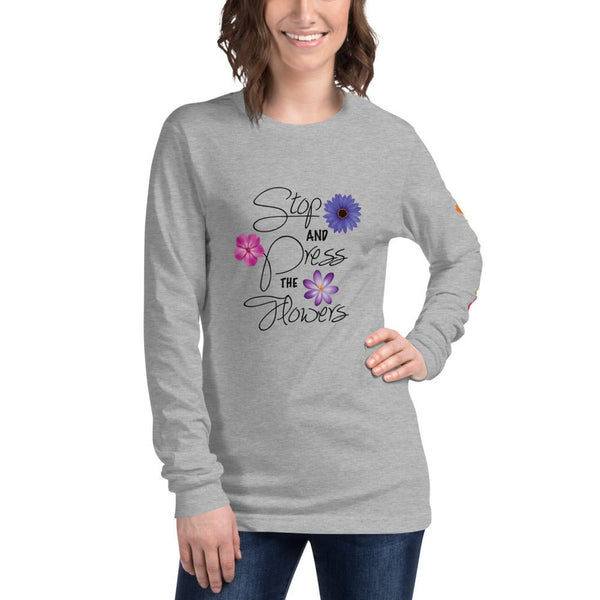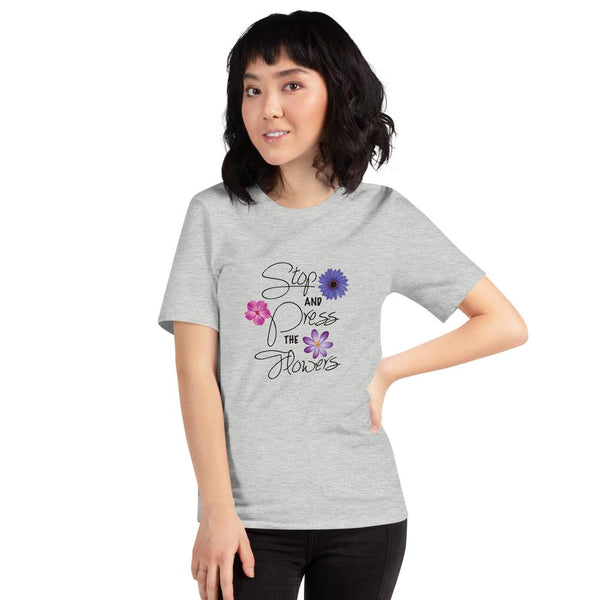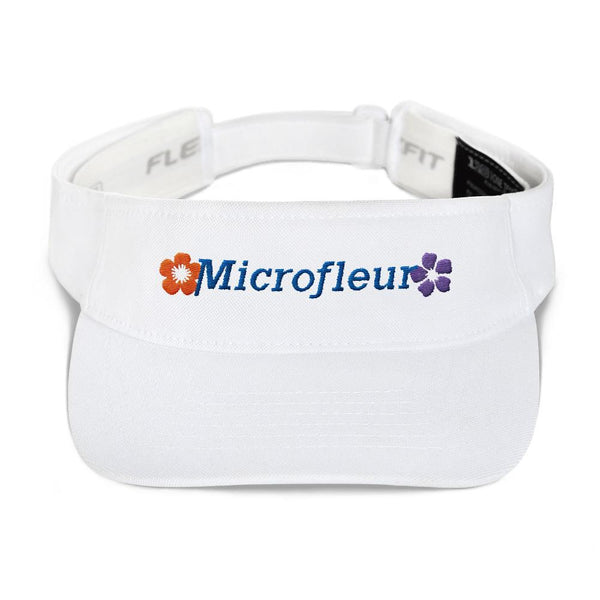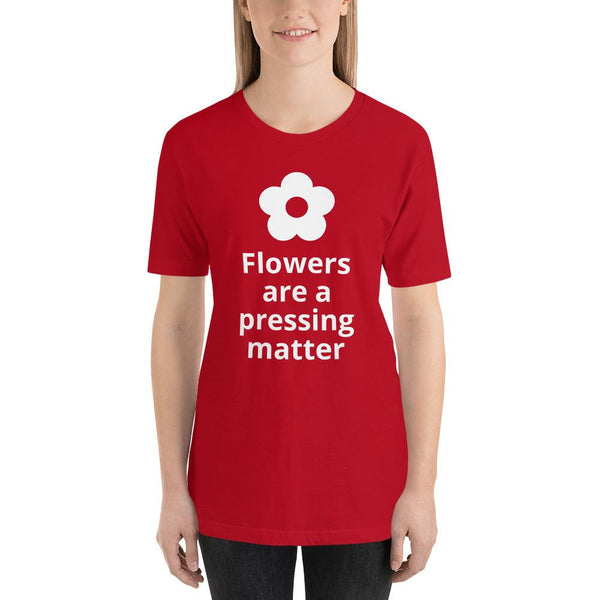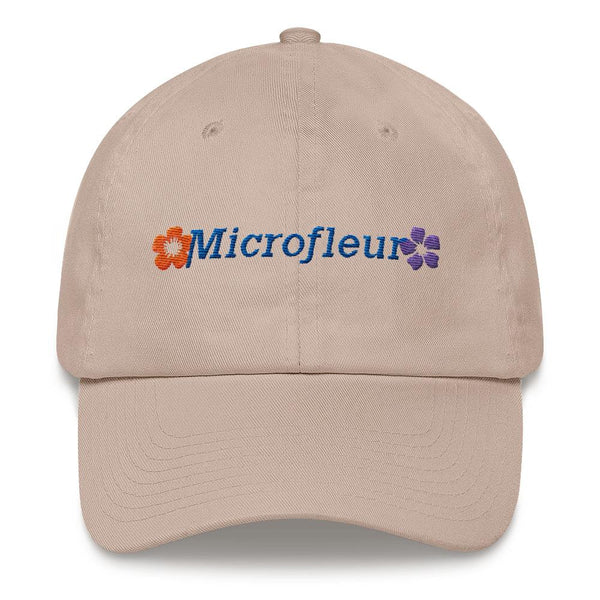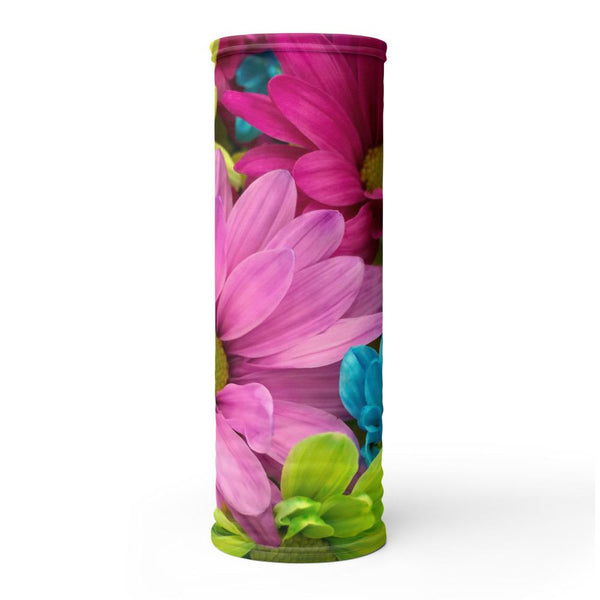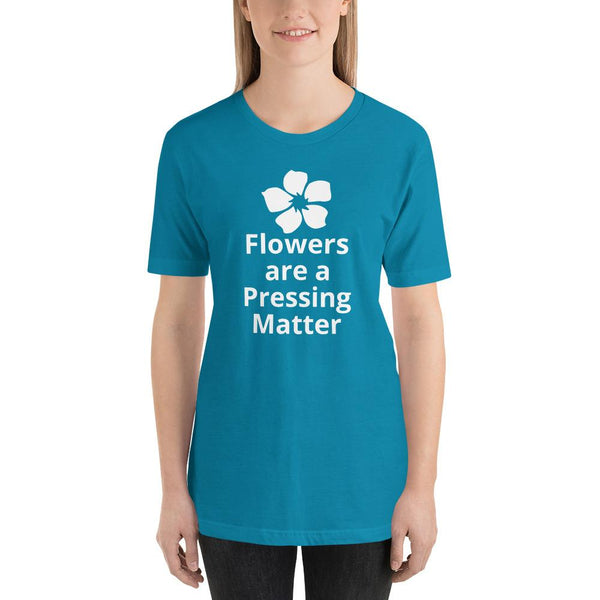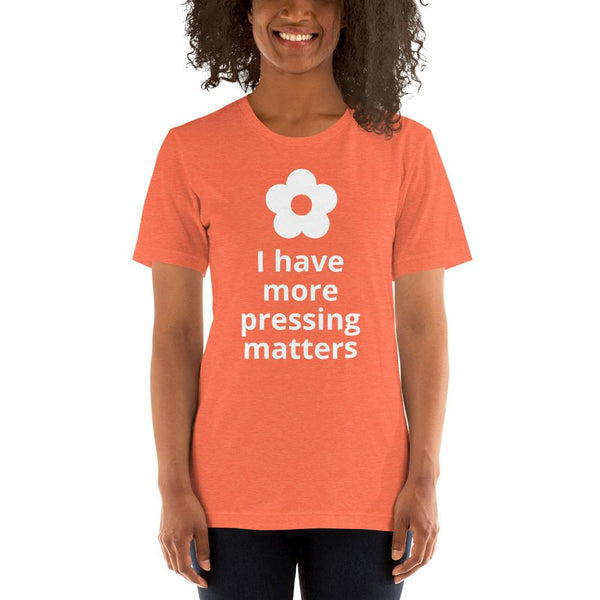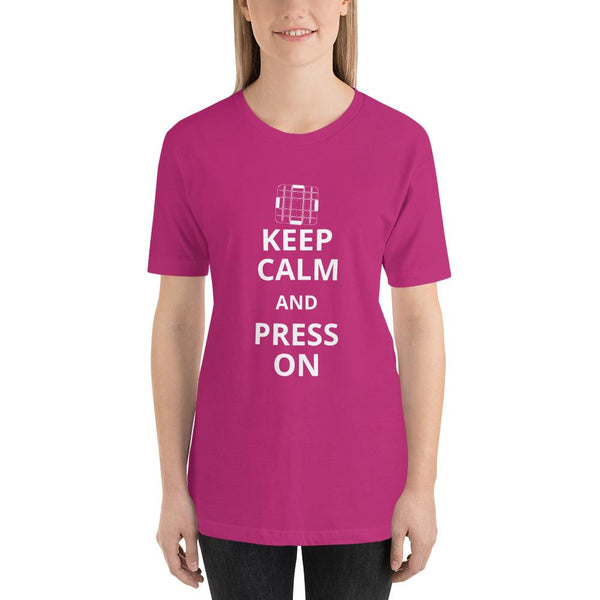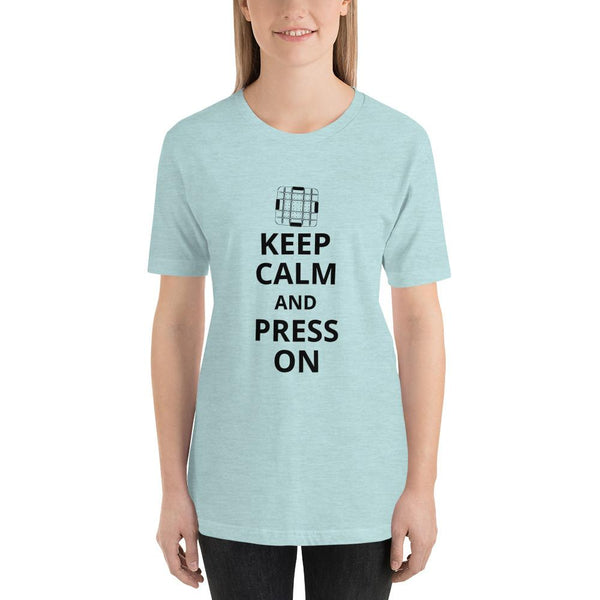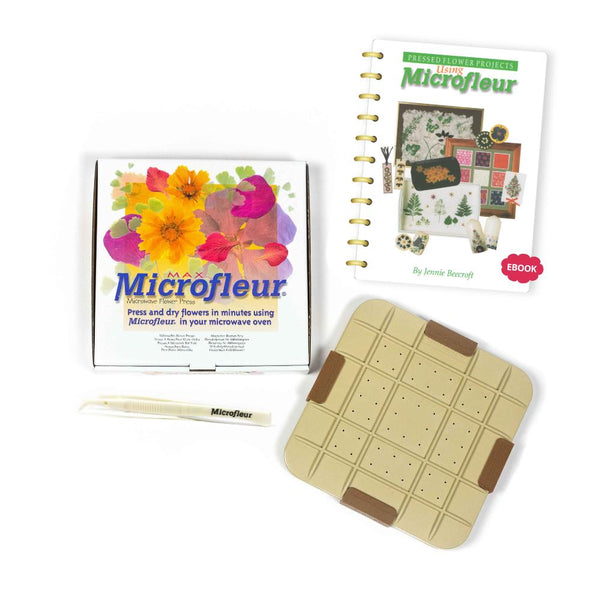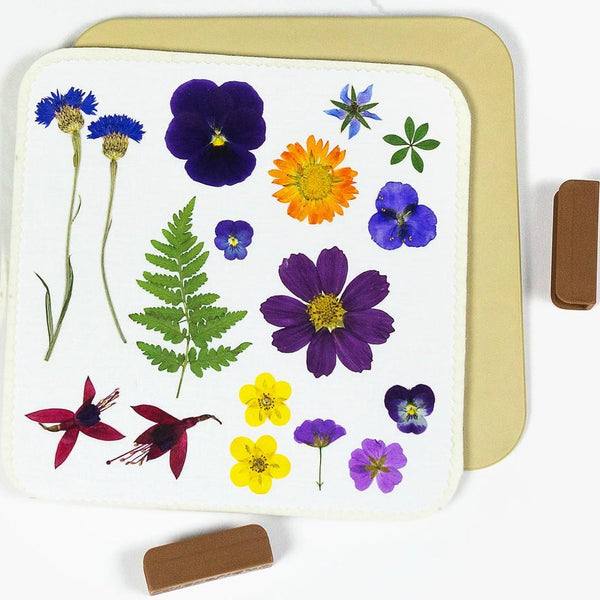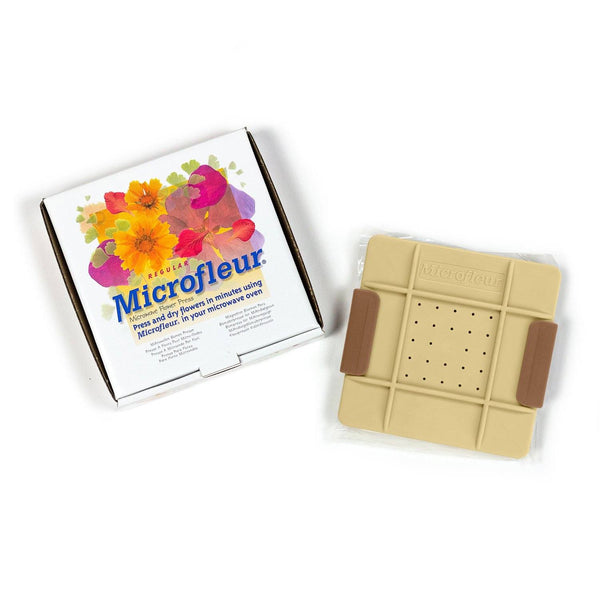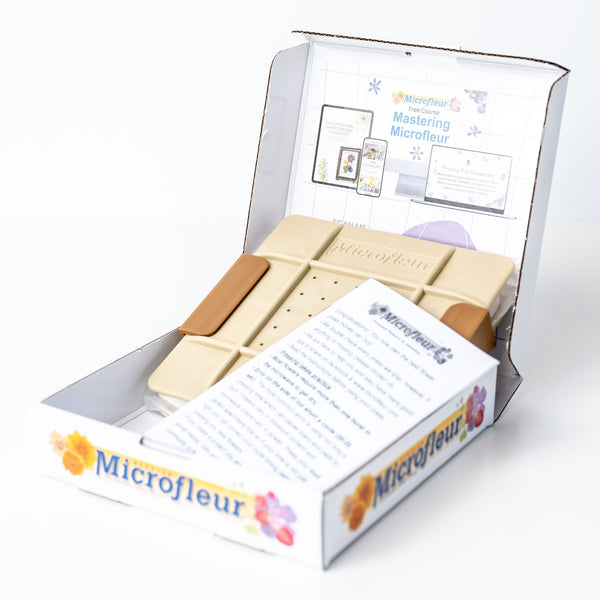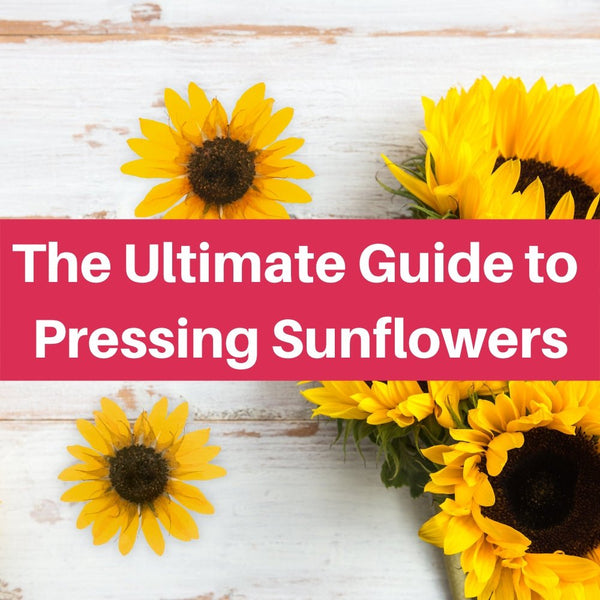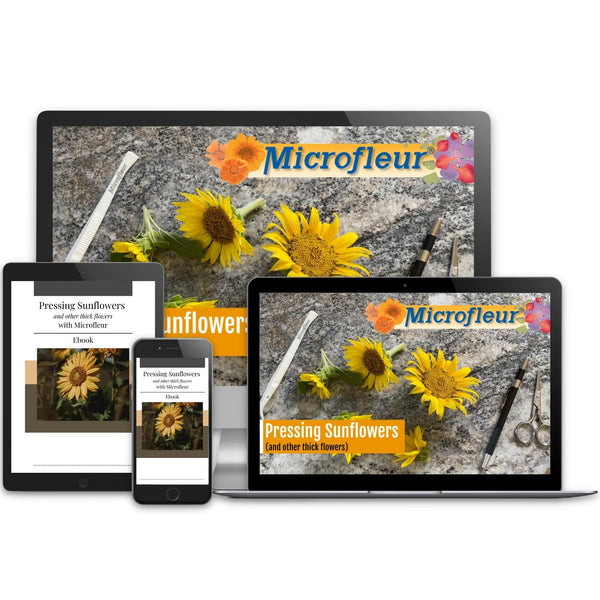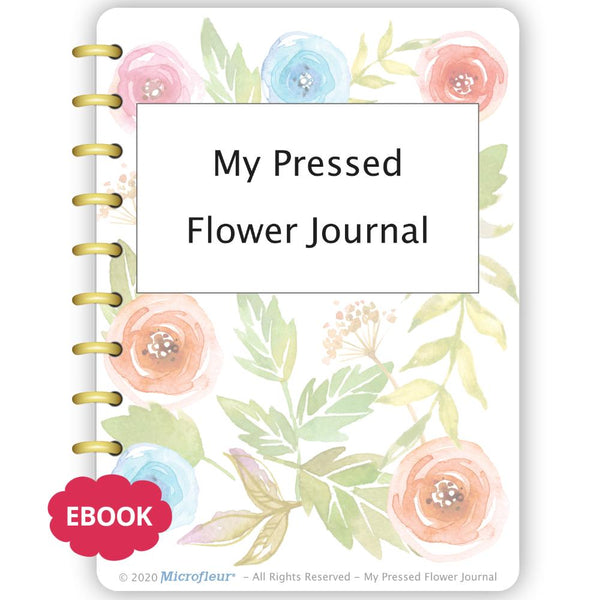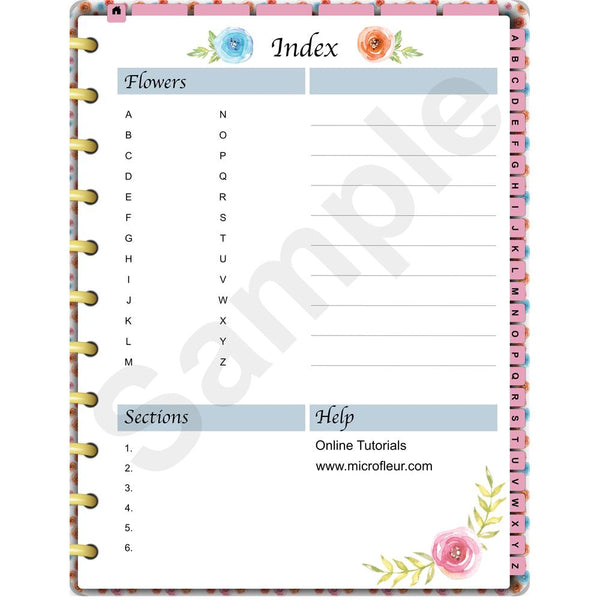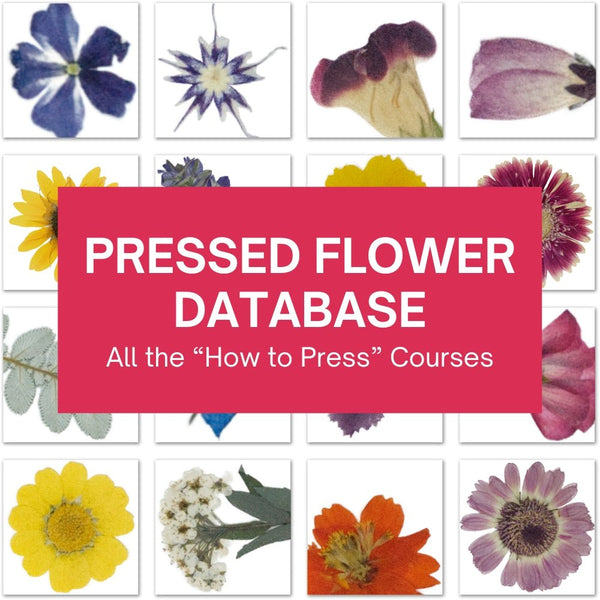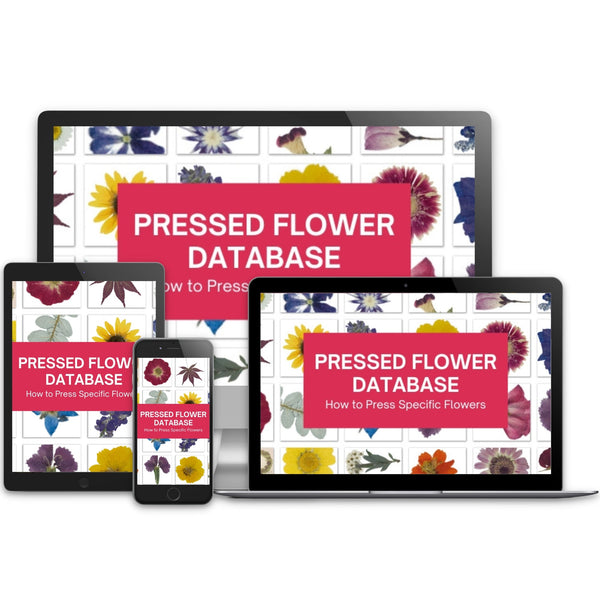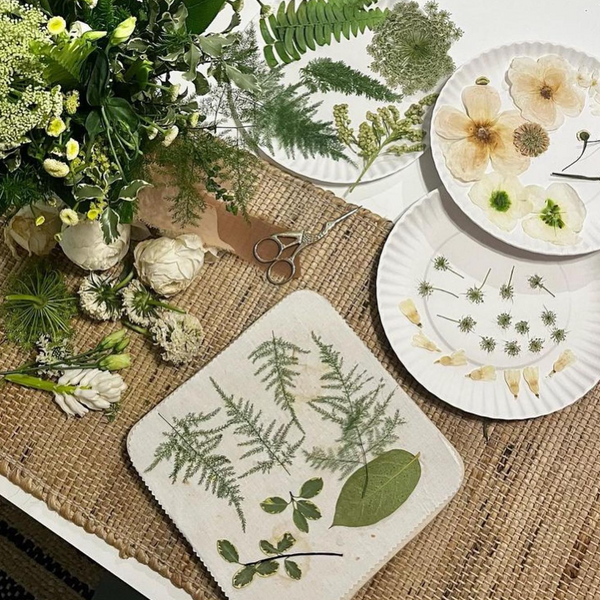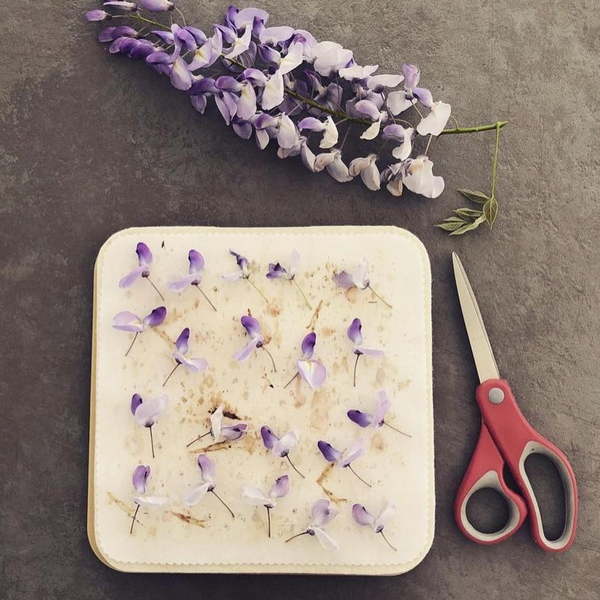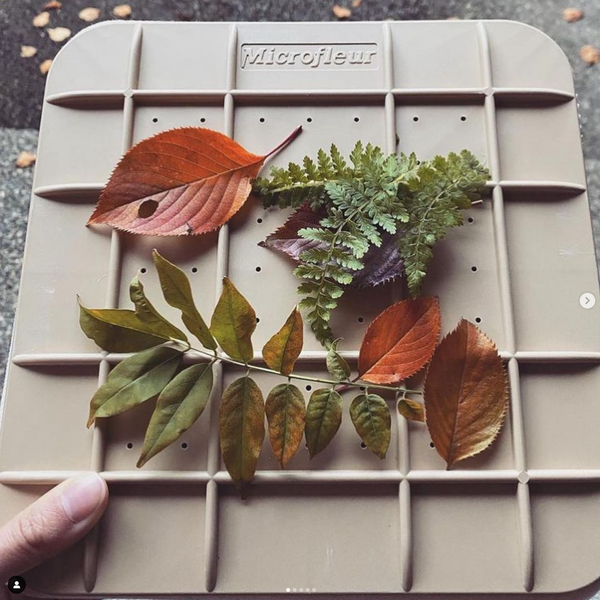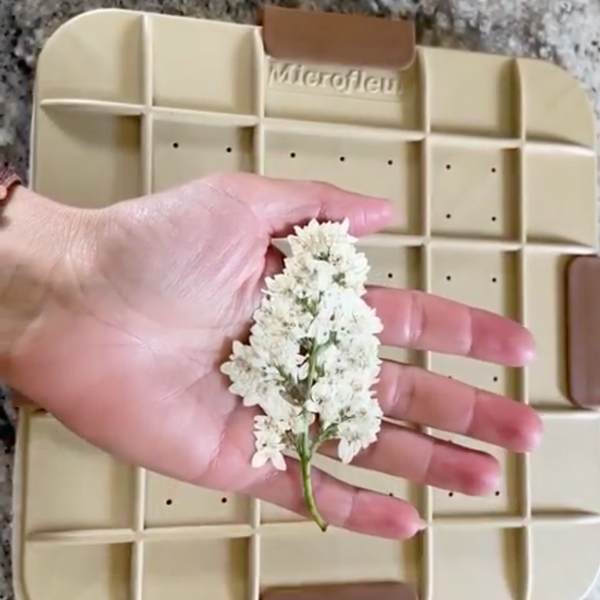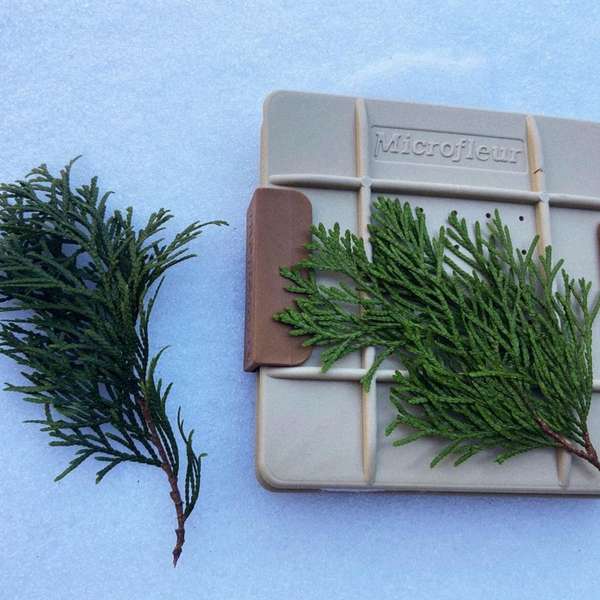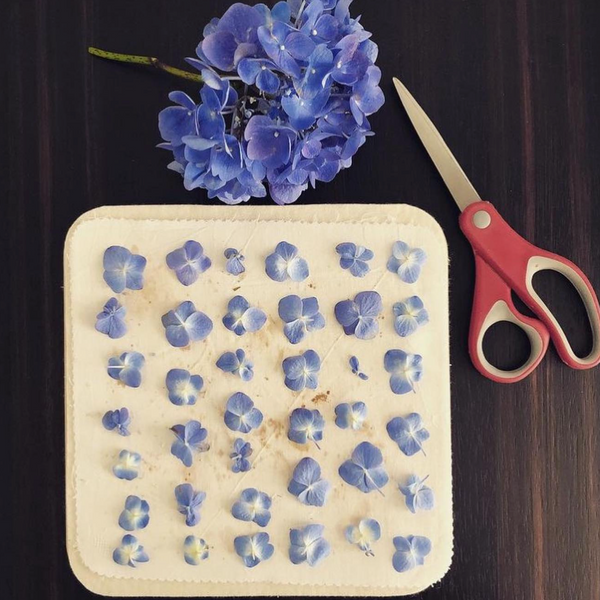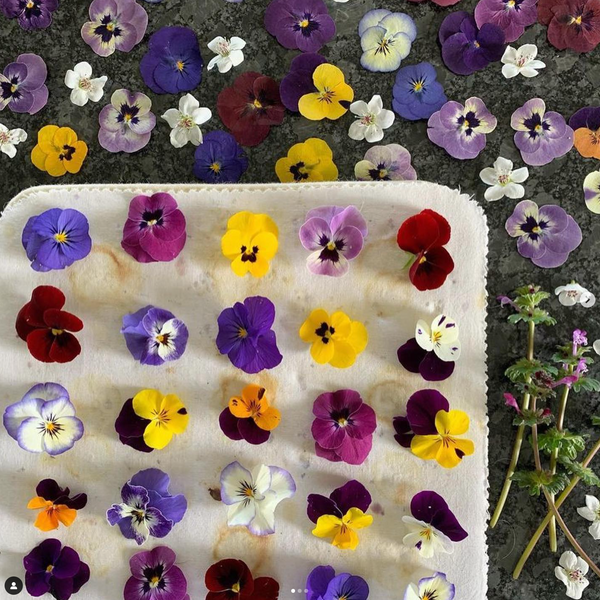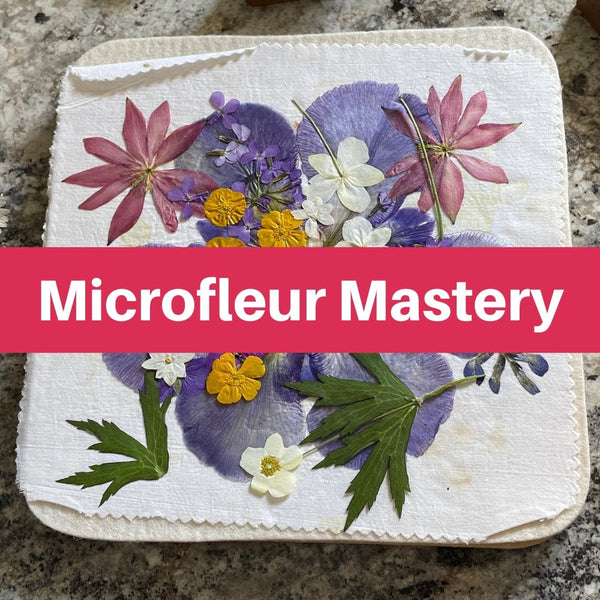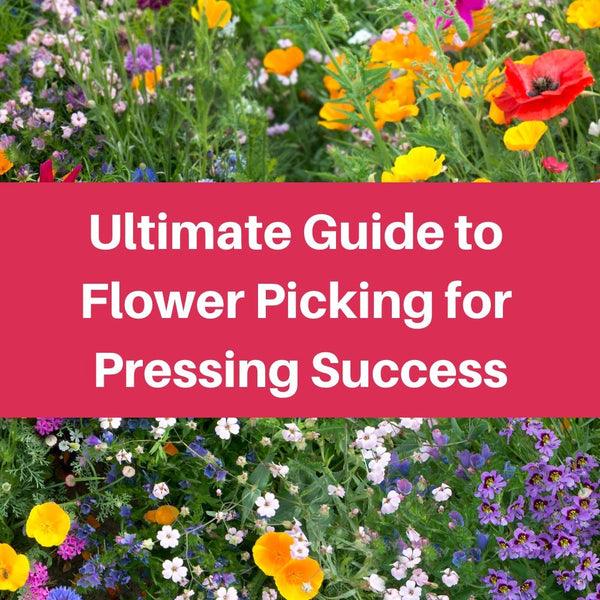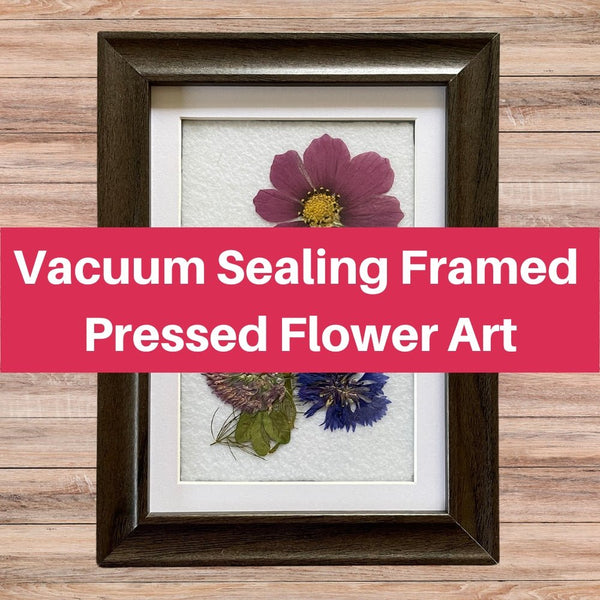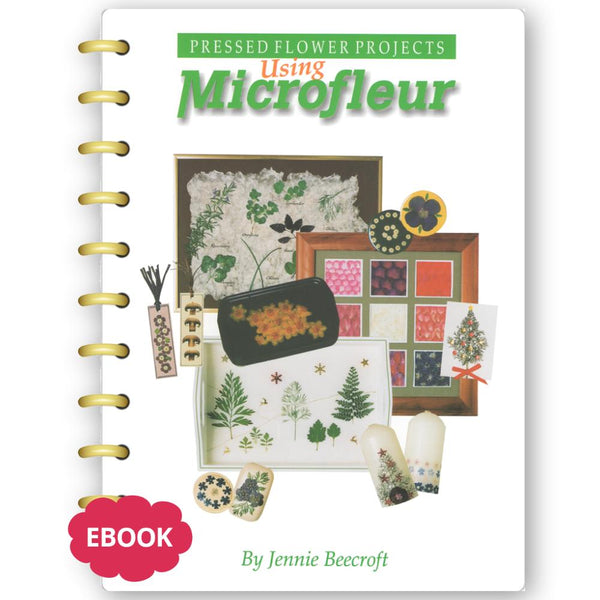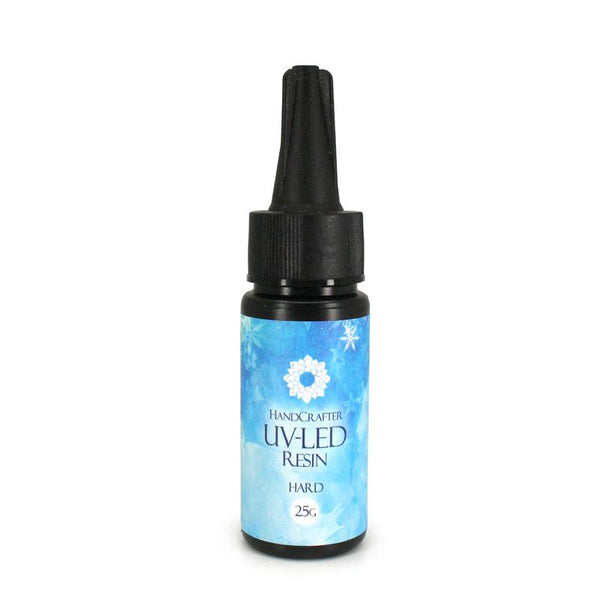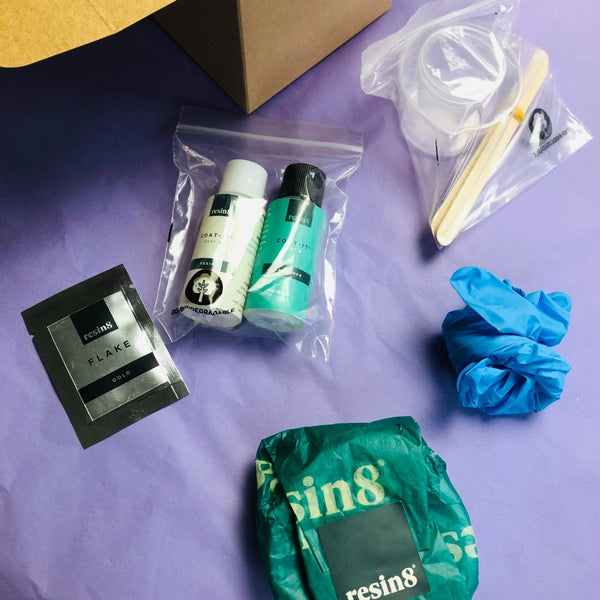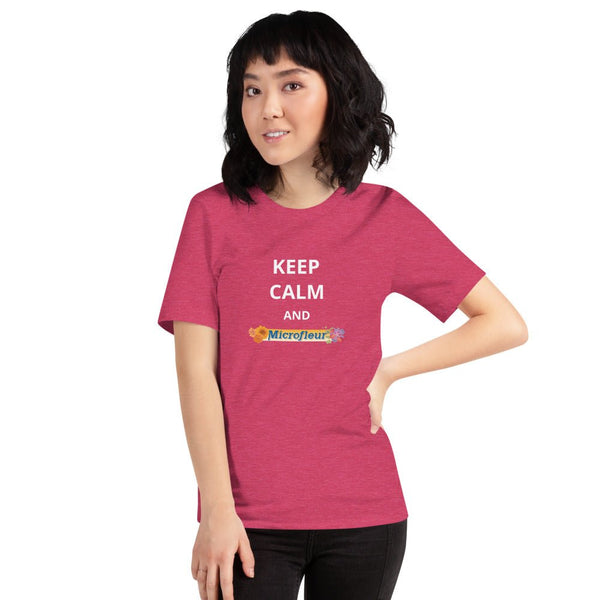Recommended supplies for doing pressed flower projects.
Doing something is always easier with the proper tools, so here is a list of some basic equipment that may make various pressed flower crafts easier to do. Although not all these items may be needed, it would be ideal to have following items on hand as they will at least be useful for completion of various projects. This is not a complete list, but our recommendations are based on the usefulness.

[Disclosure: Keep in mind that some of the links in this post are Amazon affiliate links which mean we earn a commission if you click through and purchase something. It does not cost you anything. We only recommend products that we have used ourselves and the decision is yours whether or not to purchase an item.]
Flower press - The Microfleur Max press has lots of space for pressing lots of flowers at one time. The Microfleur Regular press is a great beginner press.
Pressed flowers - Experiment with all sorts of flowers, foliage, and botanicals. You can even go for a walk and see what wild flowers you can find. Pick (make sure you have permission) and press anything you can. The main thing is to enjoy it, and give your creative talents free rein in your projects.
Clear working space with plenty of light - I find it handy to place a large sheet of white paper over my work surface as it makes seeing the flowers and design so much easier. It also helps to protect the table from spilled glue.
Cardstock for cards and bookmarks and sheets of white paper.
Glue - Use a good quality, acid free, water based PVA craft glue, and this is sufficient for the majority of projects. A little glue can go a long way so be sparing in the amount you apply. It is best to place small dots of glue over the back of the flower or leaf so that the glue can spread when your work is placed under a book to keep flat until dry. With fine specimens such as maidenhair use a wet brush to apple the glue as this will help dilute it. Try to avoid using too much glue as any excess may seep out from under the flowers and as some dry and shiny may detract from the design.
Foam brush or paint brush for applying the glue - or if the specimen is very tiny, a toothpick may be more suitable.
Scissors - they need to be sharp and come to a small point so that you can get at all the fiddly bits.
Sealer - Such should be a water based liquid. It provides a seal over the flowers and helps protect them from damage. It also makes an excellent glue for delicate flowers and ferns, and although it goes on white, it dries clear. It is available in either brush on or aerosol, Matte or Gloss - the Matte is very useful on cards as it is hard to detect when dry. Please check for color change on a sample of card and flowers before use.
Sharp Knife - a craft knife with a retractable snap blade.
Tweezers - Like the Microfleur craft tweezers make handling the delicate flowers much easier and there is less chance of damage
Ruler and pencil
Markers - a supply of gold and silver and coloured felt markers or paint pens
Ribbon - an assortment of various colored ribbon for use with bookmarks and cards
Piece of glass/plexiglass - this is optional but it is a great help when gluing the flowers, also if you get interrupted cover your project with it and the flowers are less likely to get displaced.
Plastic food wrap - to cover the design after gluing, prior to putting under a heavy book to dry.
Rubber Stamping and Embossing - a great way to enhance your pressed flower designs. There are many stamps and supplies to choose. Have everything ready before you start - stamp pad, stamp, embossing powder, paper, heat source (such as a heat gun or toaster, not a hair dryer), card. Stamp the design on the card, sprinkle with embossing powder and shake to cover. Shake the excess onto the paper. Holding the design several inches from the heat source heat the design until it goes glossy. If using a heat gun direct the heat straight onto the design, with other sources such as a toaster, apply the heat to the back of the design. The excess embossing powder can be carefully returned to the bottle for re-use.
UV Resin - This is great for smaller projects. There is no mixing required as it will cure under a uv light or a uv nail lamp. Under the uv lamp, it will cure in 30 to 60 seconds.
Two-part Resin - gives a thick, slightly heat resistant, extremely shiny finish on inflexible surfaces, such as coasters, trays, wooden placements, etc. There are detailed instructions included with each kit. Any air bubbles that may appear can be removed by gently blowing through a straw or with a bbq lighter. The process requires patience and a ventilated work area. Drying time can take up to 48 hours and the item needs to be kept perfectly level during that time. Covering it in some way, such as a large box, helps to keep the dust and little insects from damaging the surface. Any flowers, paper, etc. that are to be covered with the gloss must be perfectly dry and fully glued and sealed as any loose pieces may curl and break the surface and then another coat will be required.
For some applications, you may want a Glaze which cleans up with soap and water while still wet and doesn't require mixing of parts.
